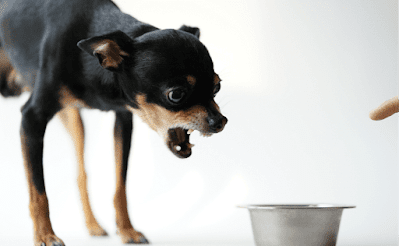Training a dog may be one of the most rewarding experiences a pet owner can have. To see their dog sit, stay, and roll over on command is a thing of wonder. However, this sort of obedience and training doesn't happen overnight. Here are some tips to help you get your dog doing tricks.
As with anything, reinforce the good behaviors from your dog. Make sure that you have treats handy, or just use lots of praise for actions that are good. This will teach your dog to try and get a treat, or your praise and reinforce to them that what they just did was something you want them to keep doing.
Verbal cues are very important to make sure that your dog is under your command. The word "yes" may serve as a good gap-filler in between the dog's good behavior and the giving of the reward.
Most dogs respond better to positive reinforcement rather than negative punishment. If you're trying to train your dog, reward him for good behavior and only scold him if absolutely necessary. Your dog will remember the reward for good behavior more distinctly than the punishment for bad behavior, making rewarding more effective.
The best way to prevent your dog from barking excessively, is to make him more comfortable with whatever it is he barks at so frequently. Dogs bark at anything that scares of threatens them, so if you show your dog that the object of their fear is nothing to be afraid of, he'll stop barking.
You should make sure to eat your own meal first before feeding your dog. This shows your dog that you are leader of the pack and helps establish your dominance. Your dog will be much more likely to follow your other commands if he or she knows that you are the boss because you eat first.
To train a dog how to act around people and guests in your home, it is crucial that the dog is socialized with other people. This contact with people, especially people who are new to your dog, will allow you to train the dog on how he should react. This is very useful to the training process.
When you train your dog it is important to reinforce every example of behavior you want to encourage. Whenever your pet behaves according to your wishes it should be rewarded. This will prevent your dog from becoming confused and establish positive reinforcement associations. Behavior that is rewarded is behavior that will be repeated and eventually become habitual.
It is vital that the dog's leash remain loose when you are trying to train it to walk on a leash. This gives your dog the option to explore and walk around freely. Their eagerness will cause the leash to be strained. Some owners do not encourage this behavior and instead, allow some slack on the leash.
By being consistent in toilet training, you dog will learn to wait until he is outside to relieve himself. If you are home, spend time everyday with your puppy, and take him out every hour or so. When the dog eliminates outside, offer it praise. Do not scold the dog if he relieves himself inside the house. He is not yet aware that this is wrong and he is going to learn if you just yell at him. Instead, give the pet every chance to succeed by taking it outside as soon as you remove it from the crate and roughly 15 minutes after it eats or drinks.
Dogs can be spoiled just like children. While rewards are definitely necessary to keep your dog on the right path, too many rewards can lead your dog to expect them! Your dog should be treated for challenging tasks, or performing tasks he knows under exceptional circumstances. Making him work for his grub encourages him to stay on his toes.
When training your dog, avoid overlong training sessions by training your dog in several smaller sessions spaced throughout the day. By scattering your training at different times throughout the day your dog will learn to listen to you whenever and wherever you are.
Listen to professional advice. If you adopt a dog from a shelter or a rescue organization, listen to their advice. More often than not, they will have spent a lot of time with the dog, and will know the best method to train him. Some shelter dogs are very skittish, and require extra care when trying to train them, especially if they have been previously mistreated.
By way of conclusion, the rewarding feeling of teaching a dog to obey your commands is blissful. To watch them do what you say can bring a smile to your face. If you practice, and have the right advice, it actually can be rather simple to train them. This article offered plenty of advice to help.

